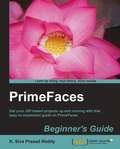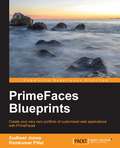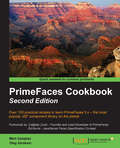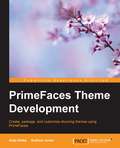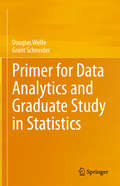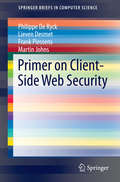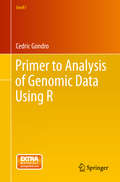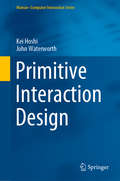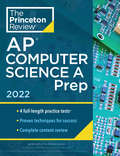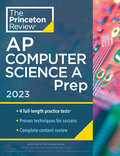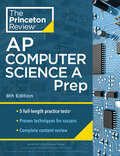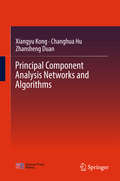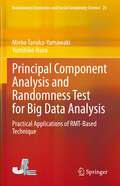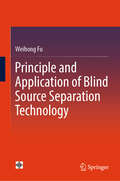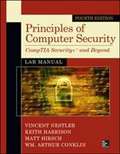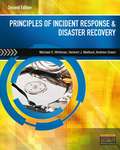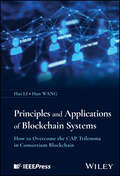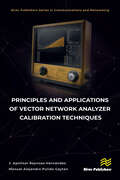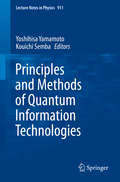- Table View
- List View
PrimeFaces Beginner's Guide
by K. Siva ReddyA guide for beginner's with step-by-step instructions and an easy-to-follow approach.PrimeFaces Beginners Guide is a simple and effective guide for beginners, wanting to learn and implement PrimeFaces in their JSF-based applications. Some basic JSF and jQuery skills are required before you start working through the book.
PrimeFaces Blueprints
by Sudheer Jonna Ramkumar PillaiIf you are a Java developer with experience of frontend UI development, and want to take the plunge to develop stunning UI applications with the most popular JSF framework, PrimeFaces, then this book is for you. For those with entrepreneurial aspirations, this book will provide valuable insights into how to utilize successful business models.
PrimeFaces Cookbook
by Oleg VaraksinThis is a cookbook with plenty of practical recipes enriched with code and detailed explanations. This book is for you if you would like to learn modern Java web development based on PrimeFaces and are looking for a quick introduction into this matter. Prerequisites required for this book are basic JSF and jQuery skills.
PrimeFaces Cookbook - Second Edition
by Oleg Varaksin Mert CalıskanThis book is for everybody who would like to learn modern Java web development based on PrimeFaces and is looking for a quick introduction to this matter. Prerequisites for this book are basic JSF, jQuery, and CSS skills.
PrimeFaces Theme Development
by Sudheer Jonna Andy BaileyCreate, package, and customize stunning themes using PrimeFacesAbout This BookBuild PrimeFaces themes that meet the industry standardsCustomize your themes for mobile web applications with PrimeFaces MobileA precise, example-oriented guide to help you create interesting themes using the PrimeFaces toolsWho This Book Is ForIf you are a Web Designer who wants to create and modify PrimeFaces themes then this book is for you. Basic knowledge of JSF, CSS, and HTML is assumed.What You Will LearnUse Maven to create JSF ProjectsCreate a custom theme using JQuery UI toolsPackage your theme for distribution and use your PrimeFaces-based web applications as drop in librariesDevelop additional dynamic look and feel elements that themes do not already supplyApply look and feel elements dynamically to views without causing page refreshesReduce code repetition by applying page templates to your JSF projectIn DetailDeveloping stunning themes for web applications has never been easier! PrimeFaces delivers a powerful set of features that enables JSF developers to create and customize awesome themes on the web. It is very easy to use because it comes as a single JAR file and requires no mandatory XML configuration. With more than 30 out-of-the-box themes, jQuery integration, a mobile UI toolkit, Ajax Push technology, and much more, PrimeFaces takes JSF application development to a whole new level!This book is a hands-on example-rich guide to creating and customizing PrimeFaces themes using available tools.Beginning with creating a JSF project and integrating the PrimeFaces library, this book will introduce you to the features of theme components, how these are structured, and how PrimeFaces uses JQuery UI to apply a theme to your application. You will learn to examine and change the CSS rules and get creative by setting standard icons and adding new icons to them. You will use a combination of JavaScript and CSS to enhance your application with help of scheduler component and go on to adapt and package your custom theme so that it is compatible with the Resource Manager.Finally, you will explore PrimeFaces mobile apps, ensuring themes are compatible with your mobile applications best practices for theme design.Style and approachThis book is a concise, hands-on guide to developing PrimeFaces themes, working from the ground up with examples in each topic implemented in a web application. You will be encouraged to explore areas of your own interest without the requirement to stick to the letter of the chapter.
Primer for Data Analytics and Graduate Study in Statistics
by Grant Schneider Douglas WolfeThis book is specially designed to refresh and elevate the level of understanding of the foundational background in probability and distributional theory required to be successful in a graduate-level statistics program. Advanced undergraduate students and introductory graduate students from a variety of quantitative backgrounds will benefit from the transitional bridge that this volume offers, from a more generalized study of undergraduate mathematics and statistics to the career-focused, applied education at the graduate level. In particular, it focuses on growing fields that will be of potential interest to future M.S. and Ph.D. students, as well as advanced undergraduates heading directly into the workplace: data analytics, statistics and biostatistics, and related areas.
Primer on Client-Side Web Security
by Philippe De Ryck Lieven Desmet Frank Piessens Martin JohnsThis volume illustrates the continuous arms race between attackers and defenders of the Web ecosystem by discussing a wide variety of attacks. In the first part of the book, the foundation of the Web ecosystem is briefly recapped and discussed. Based on this model, the assets of the Web ecosystem are identified, and the set of capabilities an attacker may have are enumerated. In the second part, an overview of the web security vulnerability landscape is constructed. Included are selections of the most representative attack techniques reported in great detail. In addition to descriptions of the most common mitigation techniques, this primer also surveys the research and standardization activities related to each of the attack techniques, and gives insights into the prevalence of those very attacks. Moreover, the book provides practitioners a set of best practices to gradually improve the security of their web-enabled services. Primer on Client-Side Web Security expresses insights into the future of web application security. It points out the challenges of securing the Web platform, opportunities for future research, and trends toward improving Web security.
Primer to Analysis of Genomic Data Using R
by Cedric GondroThrough this book, researchers and students will learn to use R for analysis of large-scale genomic data and how to create routines to automate analytical steps. The philosophy behind the book is to start with real world raw datasets and perform all the analytical steps needed to reach final results. Though theory plays an important role, this is a practical book for graduate and undergraduate courses in bioinformatics and genomic analysis or for use in lab sessions. How to handle and manage high-throughput genomic data, create automated workflows and speed up analyses in R is also taught. A wide range of R packages useful for working with genomic data are illustrated with practical examples. The key topics covered are association studies, genomic prediction, estimation of population genetic parameters and diversity, gene expression analysis, functional annotation of results using publically available databases and how to work efficiently in R with large genomic datasets. Important principles are demonstrated and illustrated through engaging examples which invite the reader to work with the provided datasets. Some methods that are discussed in this volume include: signatures of selection, population parameters (LD, FST, FIS, etc); use of a genomic relationship matrix for population diversity studies; use of SNP data for parentage testing; snpBLUP and gBLUP for genomic prediction. Step-by-step, all the R code required for a genome-wide association study is shown: starting from raw SNP data, how to build databases to handle and manage the data, quality control and filtering measures, association testing and evaluation of results, through to identification and functional annotation of candidate genes. Similarly, gene expression analyses are shown using microarray and RNAseq data. At a time when genomic data is decidedly big, the skills from this book are critical. In recent years R has become the de facto
Primitive Interaction Design (Human–Computer Interaction Series)
by John Waterworth Kei HoshiInteraction design is acknowledged as an important area of study, and more especially of design practice. Hugely popular and profitable consumer devices, such as mobile phones and tablets, are seen as owing much of their success to the way they have been designed, not least their interface characteristics and the styles of interaction that they support. Interaction design studies point to the importance of a user-centred approach, whereby products are in principle designed around their future users’ needs and capacities. However, it is the market, and marketing, that determine which products are available for people to interact with and to a great extent what their designed characteristics are. Primitive Interaction Design is based on the realisation that designers need to be freed from the marketplace and industry pressure, and that the usual user-centred arguments are not enough to make a practical difference. Interaction designers are invited to cast themselves as “savages”, as if wielding primitive tools in concrete physical environments. A theoretical perspective is presented that opens up new possibilities for designers to explore fresh ideas and practices, including the importance of conscious and unconscious being, emptiness and trickery. Building on this, a set of design tools for primitive design work is presented and illustrated with practical examples. This book will be of particular interest to undergraduate and graduate students and researchers in interaction design and HCI, as well as practicing interaction designers and computer professions. It will also appeal to those with an interest in psychology, anthropology, cultural studies, design and the future of technology in society.
Primitive Photography: A Guide to Making Cameras, Lenses, and Calotypes (Alternative Process Photography Ser.)
by Alan GreenePrimitive Photography considers the hand-made photographic process in its entirety, showing the reader how to make box-cameras, lenses, paper negatives and salt prints, using inexpensive tools and materials found in most hardware and art-supply stores. Step-by-step procedures are presented alongside theoretical explanations and historical background. Streamlined calotype procedures are demonstrated, featuring different paper negative processes and overlooked, developing-out printing methods. Primitive Photography combines the simplicity of pinhole photography, the handmade quality of alternative processes, and the precision of large-format. For those seeking alternatives to commercially prepared material as well as digital photography, it provides the instructions for creating the entire photographic process from the ground up. Given its scope and treatment of the photographic process as a whole, this may be the first book of its kind to appear in over a century.
Princeton Review AP Computer Science A Prep, 2022: 4 Practice Tests + Complete Content Review + Strategies & Techniques (College Test Preparation)
by The Princeton ReviewEVERYTHING YOU NEED TO SCORE A PERFECT 5. Ace the 2022 AP Computer Science A Exam with this comprehensive study guide, which includes 4 full-length practice tests, thorough content reviews, targeted strategies for every section of the exam, and access to online extras. Techniques That Actually Work. • Tried-and-true strategies to help you avoid traps and beat the test • Tips for pacing yourself and guessing logically • Essential tactics to help you work smarter, not harder Everything You Need to Know to Help Achieve a High Score. • Fully aligned with the latest College Board standards for AP® Computer Science A • Comprehensive content review for all test topics, including lab requirements • Engaging activities to help you critically assess your progress • Access to study plans, printable resources, helpful pre-college information, and more via your online Student Tools Practice Your Way to Excellence. • 4 full-length practice tests (3 in the book, 1 online) with detailed answer explanations • Comprehension drills in each content review chapter • Step-by-step walk-throughs of sample questions
Princeton Review AP Computer Science A Prep, 2023: 4 Practice Tests + Complete Content Review + Strategies & Techniques (College Test Preparation)
by The Princeton ReviewEVERYTHING YOU NEED TO SCORE A PERFECT 5. Ace the 2023 AP Computer Science A Exam with this comprehensive study guide, which includes 4 full-length practice tests, thorough content reviews, targeted strategies for every section of the exam, and access to online extras. Techniques That Actually Work • Tried-and-true strategies to help you avoid traps and beat the test • Tips for pacing yourself and guessing logically • Essential tactics to help you work smarter, not harder Everything You Need for a High Score • Fully aligned with the latest College Board standards for AP® Computer Science A • Comprehensive content review for all test topics, including lab requirements • Engaging activities to help you critically assess your progress • Access to study plans, printable resources, helpful pre-college information, and more via your online Student Tools Practice Your Way to Excellence • 4 full-length practice tests (3 in the book, 1 online) with detailed answer explanations • Comprehension drills in each content review chapter • Step-by-step walk-throughs of sample questions
Princeton Review AP Computer Science A Prep, 8th Edition: 5 Practice Tests + Complete Content Review + Strategies & Techniques (College Test Preparation)
by The Princeton ReviewEVERYTHING YOU NEED TO SCORE A PERFECT 5. Ace the AP Computer Science A Exam with this comprehensive study guide, which includes 5 full-length practice tests, thorough content reviews, targeted strategies for every section of the exam, and access to online extras.Techniques That Actually Work• Tried-and-true strategies to help you avoid traps and beat the test• Tips for pacing yourself and guessing logically• Essential tactics to help you work smarter, not harderEverything You Need for a High Score• Fully aligned with the latest College Board standards for AP® Computer Science A• Comprehensive content review for all test topics, including lab requirements• Engaging activities to help you critically assess your progress• Access to study plans, printable resources, helpful pre-college information, and more via your online Student ToolsPractice Your Way to Excellence• 5 full-length practice tests (3 in the book, 2 online) with detailed answer explanations• Comprehension drills in each content review chapter• Step-by-step walk-throughs of sample questions
Principal Component Analysis Networks and Algorithms
by Xiangyu Kong Changhua Hu Zhansheng DuanThis book not only provides a comprehensive introduction to neural-based PCA methods in control science, but also presents many novel PCA algorithms and their extensions and generalizations, e. g. , dual purpose, coupled PCA, GED, neural based SVD algorithms, etc. It also discusses in detail various analysis methods for the convergence, stabilizing, self-stabilizing property of algorithms, and introduces the deterministic discrete-time systems method to analyze the convergence of PCA/MCA algorithms. Readers should be familiar with numerical analysis and the fundamentals of statistics, such as the basics of least squares and stochastic algorithms. Although it focuses on neural networks, the book only presents their learning law, which is simply an iterative algorithm. Therefore, no a priori knowledge of neural networks is required. This book will be of interest and serve as a reference source to researchers and students in applied mathematics, statistics, engineering, and other related fields.
Principal Component Analysis and Randomness Test for Big Data Analysis: Practical Applications of RMT-Based Technique (Evolutionary Economics and Social Complexity Science #25)
by Mieko Tanaka-Yamawaki Yumihiko IkuraThis book presents the novel approach of analyzing large-sized rectangular-shaped numerical data (so-called big data). The essence of this approach is to grasp the "meaning" of the data instantly, without getting into the details of individual data. Unlike conventional approaches of principal component analysis, randomness tests, and visualization methods, the authors' approach has the benefits of universality and simplicity of data analysis, regardless of data types, structures, or specific field of science. First, mathematical preparation is described. The RMT-PCA and the RMT-test utilize the cross-correlation matrix of time series, C = XXT, where X represents a rectangular matrix of N rows and L columns and XT represents the transverse matrix of X. Because C is symmetric, namely, C = CT, it can be converted to a diagonal matrix of eigenvalues by a similarity transformation SCS-1 = SCST using an orthogonal matrix S. When N is significantly large, the histogram of the eigenvalue distribution can be compared to the theoretical formula derived in the context of the random matrix theory (RMT, in abbreviation). Then the RMT-PCA applied to high-frequency stock prices in Japanese and American markets is dealt with. This approach proves its effectiveness in extracting "trendy" business sectors of the financial market over the prescribed time scale. In this case, X consists of N stock- prices of length L, and the correlation matrix C is an N by N square matrix, whose element at the i-th row and j-th column is the inner product of the price time series of the length L of the i-th stock and the j-th stock of the equal length L. Next, the RMT-test is applied to measure randomness of various random number generators, including algorithmically generated random numbers and physically generated random numbers. The book concludes by demonstrating two applications of the RMT-test: (1) a comparison of hash functions, and (2) stock prediction by means of randomness, including a new index of off-randomness related to market decline.
Principle and Application of Blind Source Separation Technology
by Weihong FuThis book focuses on the principle of blind source separation (BSS) technology and its application in communication signal processing. This book first introduces the basic knowledge of BSS technology, and then introduces the whitening pre-processing algorithm of BSS and the source signal number estimation technology. The principles and implementation steps of various BSS algorithms are introduced in detail, and the simulation results of various algorithms are given. The application examples and experimental results of BSS technology in communication signal processing are given. The detailed derivation and simulation results of BSS algorithm principles are the features of this book, which is especially suitable for readers who are interested in learning BSS technology. The book can benefit researchers, engineers and graduate students in the fields of communications engineering and signal processing.
Principle of Criminal Imputation for Negligence Crime Involving Artificial Intelligence (Artificial Intelligence and the Rule of Law)
by Shuhong ZhaoThis book provides an in-depth discussion of the theoretical and practical issues of criminal imputation for negligence crime involving artificial intelligence. Accordingly, this study combines the imputation challenges brought about by AI with traditional criminal imputation theory and analyses imputation for negligence crime involving AI from three aspects: the basic principles, structure, and results of imputation for negligence crime involving AI. The traditional theory of imputation is discussed in detail. The readership is a group of people interested in this topic, including, in particular, interested laymen, undergraduate students and postgraduate researchers. The highlights of this book are it identifies the imputation challenges bought about by AI, reveals the theoretical and practical gap in the criminal imputation of negligent crimes involving AI, and provides an in-depth and creative ideas of criminal imputation for the negligent crimes involving AI.
Principle of Petri Nets
by Chongyi Yuan“Principle of Petri nets” is the ultimate guide for understanding the fundamental principles of Petri nets and their potential applications. The book provides a detailed introduction to basic concepts such as global time, global state, and global control, and demonstrates how they relate to effective modeling of complex systems. Especially, the book covers the critical concepts of net system hierarchy formed with net folding and various methods for system analysis to give readers the tools they need to create and test effective models. This book’s extensive application examples, including N-lift control, business process modeling, and a three-layer model for business process management (BPM), offer readers invaluable real-world insights and practical knowledge. Moreover, the book includes coverage of key topics such as concurrent nets (C-nets) that introduce data types into nets, general net theory like synchrony, enlogy (net logic), net topology, concurrency axioms, and information systems for reversible information transfer. This book is an essential reference for students, researchers, and professionals interested in enhancing their understanding of Petri nets, systems design, and other complex processes.
Principles Of Computer Security Lab Manual
by Matthew Hirsch Keith Harrison Vincent Nestler Wm. Conklin Corey SchouPractice the Computer Security Skills You Need to Succeed! <p><p> 40+ lab exercises challenge you to solve problems based on realistic case studies <p> Step-by-step scenarios require you to think critically <p> Lab analysis tests measure your understanding of lab results <p> Key term quizzes help build your vocabulary <p> Labs can be performed on a Windows, Linux, or Mac platform with the use of virtual machines
Principles Of Digital Communication: A Top-Down Approach
by Bixio RimoldiThis comprehensive and accessible text teaches the fundamentals of digital communication via a top-down-reversed approach, specifically formulated for a one-semester course. The unique approach focuses on the transmission problem and develops knowledge of receivers before transmitters. In doing so it cuts straight to the heart of the digital communication problem, enabling students to learn quickly, intuitively, and with minimal background knowledge. Beginning with the decision problem faced by a decoder and going on to cover receiver designs for different channels, hardware constraints, design trade-offs, convolutional coding, Viterbi decoding, and passband communication, detail is given on system-level design as well as practical applications in engineering. All of this is supported by numerous worked examples, homework problems, and MATLAB simulation exercises to aid self-study, providing a solid basis for students to specialize in the field of digital communication and making it suitable for both traditional and flipped classroom teaching.
Principles Of Incident Response And Disaster Recovery
by Andrew Green Michael Whitman Herbert MattordPrinciples Of Incident Response And Disaster Recovery, 2nd Edition presents methods to identify vulnerabilities within computer networks and the countermeasures that mitigate risks and damage. From market-leading content on contingency planning, to effective techniques that minimize downtime in an emergency, to curbing losses after a breach, this text is the resource needed in case of a network intrusion.
Principles Of Information Systems
by Ralph M. Stair George W. ReynoldsDevelop an understanding of the core principles of IS and how it is practiced today with PRINCIPLES OF INFORMATION SYSTEMS, 13th edition. This edition combines the latest research with the most current coverage available as content highlights IS-related careers. You explore the challenges and risks of computer crimes, hacking, and cyberterrorism as well as the most current research on big data, analytics, and global IS and social networking. In addition, you examine business intelligence, cloud computing, e-commerce, enterprise systems, mobile computing, strategic planning, and systems acquisition. You learn how information systems can increase profits and reduce costs as you explore artificial intelligence, change management, data governance, environmental concerns, Internet of Everything, Internet censorship and net neutrality, virtual teams, and more. Interactive multimedia resources, MindTap, help you maximize success as an employee, decision maker, and business leader.
Principles and Applications of Blockchain Systems: How to Overcome the CAP Trilemma in Consortium Blockchain
by Hui Li Han WangTechnical theory, key technologies, and practical applications for consortium blockchains, with a solution to the CAP trilemma problem Principles and Applications of Blockchain Systems provides a comprehensive introduction to consortium blockchains, including the physical, network, consensus, and contract layers, covering technical theory, key technologies, and practical applications. Beyond the technical side, this book visually showcases the application potential of consortium blockchains, with information on implementation cases in network management (Multi-Identifier System) and secure storage (Mimic Distributed Storage System). This book thoroughly addresses the CAP trilemma problem for consortium blockchains, a major barrier to scalability, by presenting a novel quantifiable impossibility triangle with a solution. Additionally, optimization techniques in consortium blockchains, such as P2P protocols for future networks and consensus algorithms, are discussed in detail. Written by two highly qualified academics with significant experience in the field, Principles and Applications of Blockchain Systems discusses topics such as: Peer-to-peer networks in consortium blockchains, covering P2P network architecture and node discovery, data synchronization, and gossip protocols Basic concepts of distributed consistency, including the SMR model in blockchain systems, assumptions for distributed networks, and the Byzantine Generals problem Consensus mechanisms evolution process from voting-based, including PBFT, RPCA, SCP, and CoT; to proof-based including PoW, PoS, and PoX; finally optimized by fusion both voting-based and proof-based, including PoV, PPoV, HotStuff Types of vulnerability for smart contracts, covering solidity code, EVM execution, and blockchain system layers Historical trend of upgrade from electronic consensus to quantum consensus With highly comprehensive coverage of the subject, Principles and Applications of Blockchain Systems serves as an ideal textbook for blockchain students and researchers, and a valuable reference book for engineers and business leaders involved in developing real-world blockchain systems.
Principles and Applications of Vector Network Analyzer Calibration Techniques (River Publishers Series in Communications and Networking)
by J. Apolinar Reynoso Hernández Manuel Alejandro Pulido GaytanThis book summarizes the work developed over more than two decades in the field of advanced calibration techniques for vector network analyzers, by the RF and Microwave Group at The Center for Scientific Research and Higher Education of Ensenada, Baja California, Mexico, which is led by Dr. J. Apolinar Reynoso-Hernández, author of this book. This book is written so that every electrical engineer, with knowledge of electrical circuits and linear algebra basics, can understand the principles of VNA calibration techniques.Vector network analyzers are normally used by engineers and researchers working in the RF and microwave field, which usually requires advanced and specialized courses at graduate level. The reader should be able to implement any VNA calibration technique, decide the most adequate calibration for a given measurement condition, and interpret the measurement results, as a seasoned RF metrology expert. Principles and Applications of Vector Network Analyzer Calibration Techniques is a useful book for beginners and professionals working on• Microwave de-embedding and test fixture characterization• Characterization of uniform transmission lines• Load-pull measurements.It is also:• An ideal tutorial for professionals and postgraduate/research stu-dents taking courses in microwave calibration techniques.• A useful textbook for practicing electronics engineering and researchers working in the RF microwave field: calibration techniques and load-pull measurements.
Principles and Methods of Quantum Information Technologies
by Yoshihisa Yamamoto Kouichi SembaThis book presents the research and development-related results of the "FIRST" Quantum Information Processing Project, which was conducted from 2010 to 2014 with the support of the Council for Science, Technology and Innovation of the Cabinet Office of the Government of Japan. The project supported 33 research groups and explored five areas: quantum communication, quantum metrology and sensing, coherent computing, quantum simulation, and quantum computing. The book is divided into seven main sections. Parts I through V, which consist of twenty chapters, focus on the system and architectural aspects of quantum information technologies, while Parts VI and VII, which consist of eight chapters, discuss the superconducting quantum circuit, semiconductor spin and molecular spin technologies. Readers will be introduced to new quantum computing schemes such as quantum annealing machines and coherent Ising machines, which have now arisen as alternatives to standard quantum computers and are designed to successfully address NP-hard/NP-complete combinatorial optimization problems, which are ubiquitous and relevant in our modern life. The book offers a balanced mix of theory-based and experimentation-based chapters written by leading researchers. Extensive information is provided on Quantum simulation, which focuses on the implementation of various many-body Hamiltonians in a well-controlled physical system, Quantum key distribution, Quantum repeaters and quantum teleportation, which are indispensable technologies for building quantum networks with various advanced applications and require far more sophisticated experimental techniques to implement.
